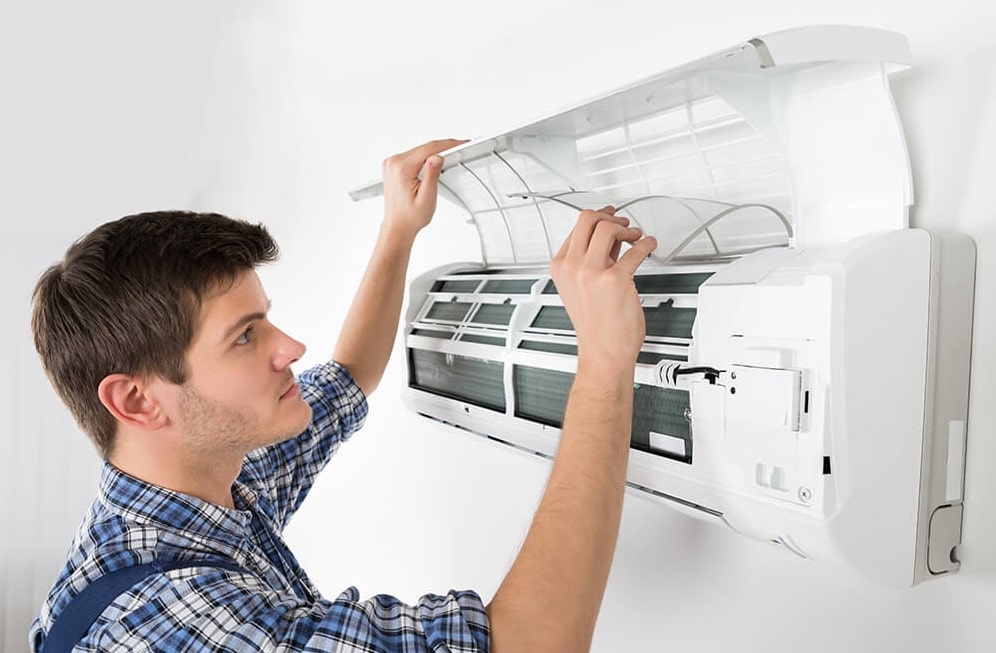Split unit HVAC systems, or split air conditioners, are well-liked options for heating and cooling requirements in homes and businesses. These systems, comprised of interior and outdoor components, provide energy economy, flexibility, and quiet operation. This post will give you all the information you require regarding split system air conditioning in Newcastle.
Table of Contents
Components
Inside Unit: The air filter, blower fan, and evaporator coil are inside the interior unit. It is usually mounted indoors and is in charge of heating or cooling the air before distributing it around the room. Outside Unit: The compressor, condenser coil, and fan are housed in the outdoor unit, which is situated outside the structure. It lets the refrigerant cool and return to the indoor unit by dissipating the heat it has received from the interior air.
Functionality
Cooler air is pumped inside when a split system air conditioning in Newcastle operates by absorbing heat from the inside air and releasing it outdoors through refrigerant. Movement of Air: The process begins with the indoor unit containing a fan. This fan circulates warm interior air over the evaporator coil by drawing it from the room. Heat Absorption: The evaporator coil contains refrigerant, a chemical with properties that allow it to change states between liquid and gas at low temperatures. As the warm indoor air passes over the cold evaporator coil, the refrigerant absorbs heat from the air, cooling it down.
Circulation of Refrigerant: As the heated refrigerant absorbs heat from the interior air, it vaporizes into a gas. After that, it goes to the outdoor unit via copper tubing. Heat Transfer: The compressor in the outside unit raises the temperature of the refrigerant gas by applying pressure on it. After passing through the condenser coil, the heated refrigerant gas releases the heat it has absorbed into the surrounding air. The Cooling Process: The refrigerant condenses back into a liquid condition as it loses heat outside. After that, it returns inside via the refrigerant lines, ready to take up further heat from the interior air.
Points to Note Before Choosing Split AC System
1. Comfort Zone: Determining Your Heating and Cooling Capacity
It begins with learning the meaning of the two magic numbers: kW (kilowatts) and BTUs (British Thermal Units). These are your markers for the heating and cooling capability of a unit. The general rule? You’ll require roughly 2.5 kW of cooling electricity for every 20 square meters of space. For the same area, 1 kW should be plenty of heating power. But avoid going too far! If the capacity is too high, you’ll be wasting energy; if it’s too low, your air conditioner will have to work harder. Thus, choose air conditioner repair in Branxton and measure your area and let the figures speak for themselves!
2. Energy Economy: The Ability to Save
All right, let’s get green. With a high Energy Efficiency Rating (EER), energy-efficient labeling, and a positive Coefficient of Performance (COP), an energy-efficient split system air conditioning in Newcastle is more than just a luxury; it’s a prudent investment. It’s the guarantee that you’re making a cozy interior space and doing it in an economical and environmentally conscious manner. Your new best buddies are the COP and the EER. Your air conditioner is more efficient if these values are higher. Seek an EER of at least 12 for cooling and a COP of approximately 3.2 for heating. Recall that an efficient unit lowers your carbon footprint and your bills. Both the earth and you will benefit from it!
3. Appropriate Sizing: Just Right—Not Too Big, Not Too Small!
It’s essential to make sure your air conditioner fits your room precisely. An enormous unit will cycle on and off too frequently, causing inefficiency and possible wear and tear, while an undersized unit will find it challenging to maintain the temperature. Use these straightforward procedures to determine the proper air conditioner capacity (sometimes expressed in kilowatts, or kW) and room size for your bedroom:
- Measure Your Space: Determine the square footage of your bedroom’s length and width in meters.
- Determine the Area: To find the total square meters of your room, multiply the length by the breadth.
- Use a Calculator for kW: Use an internet calculator or general rules.
- 2.5 kW for rooms up to 15 square meters
- 3.5 kW for rooms of 15 to 25 square meters
- 5.0 kW for rooms of 25 to 35 square meters
4. Noise Levels: Maintaining Calm
Quiet and tranquility are valuable resources; your split system air conditioning in Newcastle shouldn’t impede their enjoyment. If you want a calm environment, look for units with indoor dB values of less than 55. Specific versions have “quiet mode” functions, providing the utmost tranquility. Recall that a silent air conditioner functions like a ninja by doing its magic covertly!
5. Essential Post-Installation Requirements and Basic Non-Negotiable Features
Fundamental characteristics are similar to cake icing. Imagine digital displays that are easy to use, fans with many speeds for maximum personalization, and remote controls that provide convenience at your fingertips. Remember the TLC after you’ve decided and had your device professionally installed! The maintenance game includes closing ducts, monitoring refrigerant levels, and cleaning filters and coils regularly. And never forget that a well-maintained device can live up to fifteen years!
Conclusion
First, split system air conditioning in Newcastle provide effective, silent, and adaptable heating and cooling options for any necessary spaces. Many users now favor them because of their versatility, energy economy, and attractive design. As a one-stop shop for AC installation and air conditioner repair in Branxton, Onsite Air is equipped to handle everything from custom application-based unit design to manufacturing and complete unit assembly. To find out more about our AC repair services, get in touch with us.
